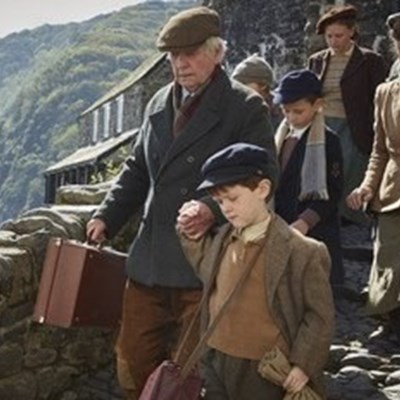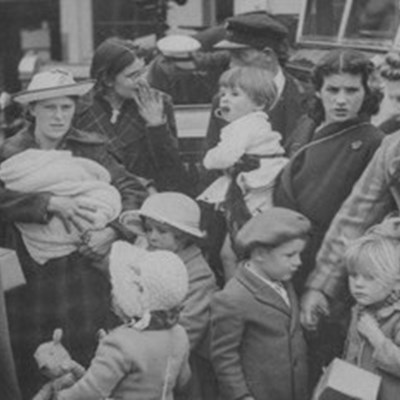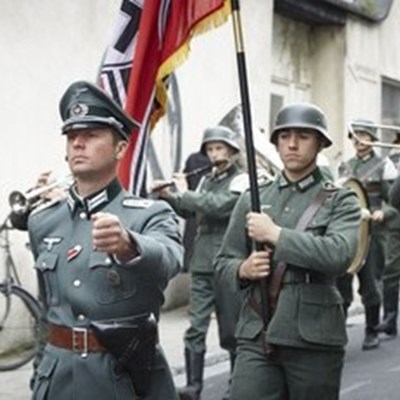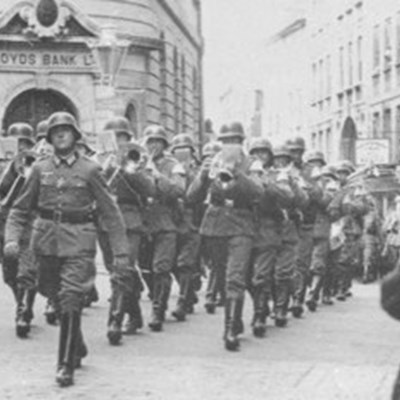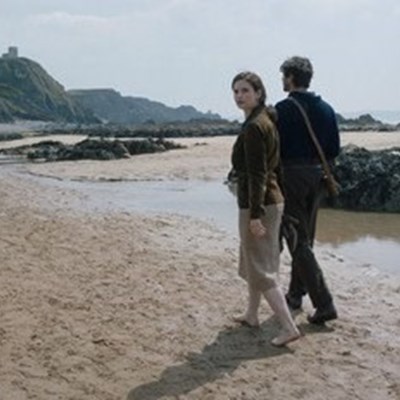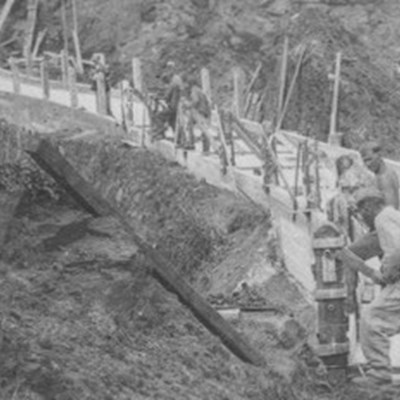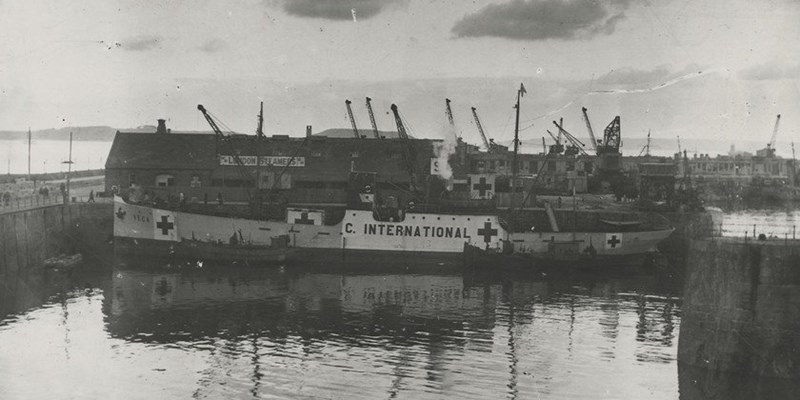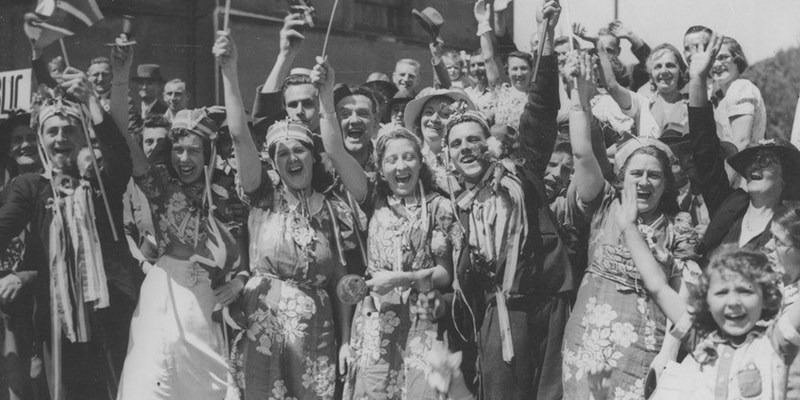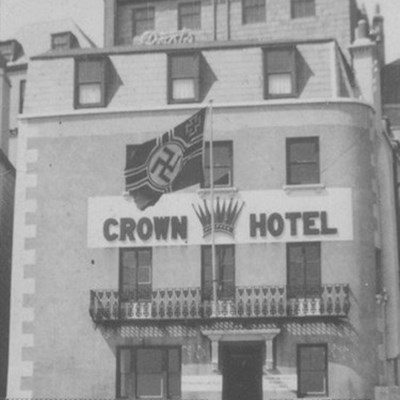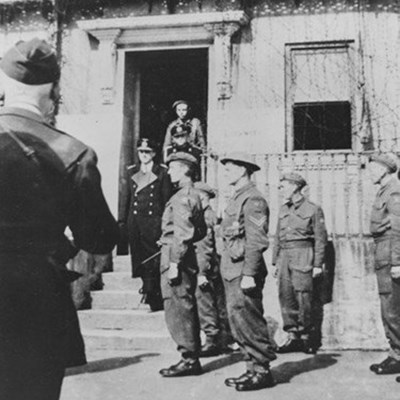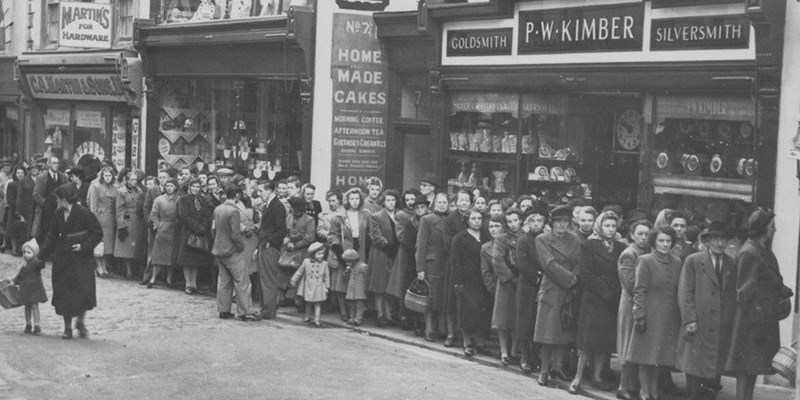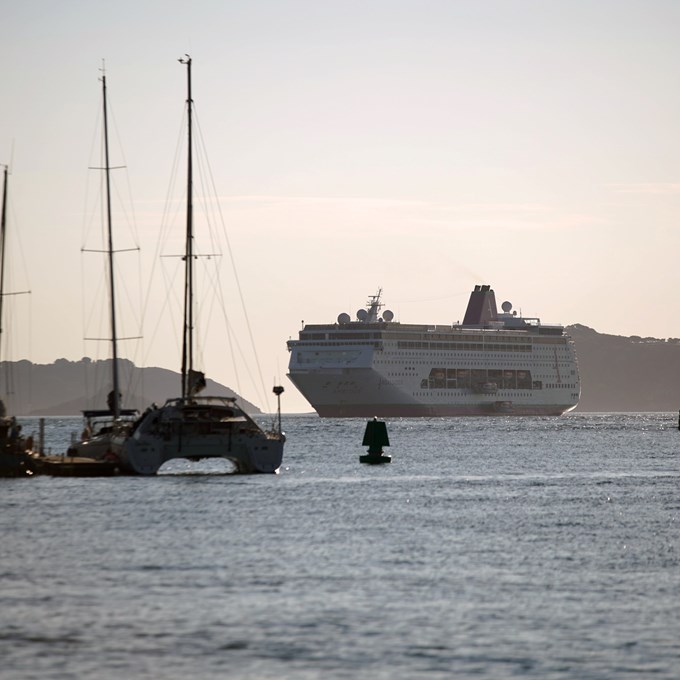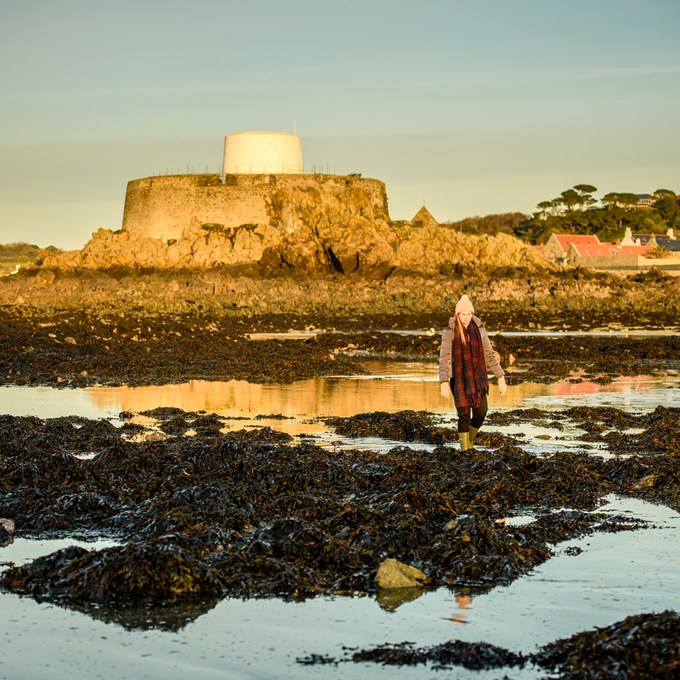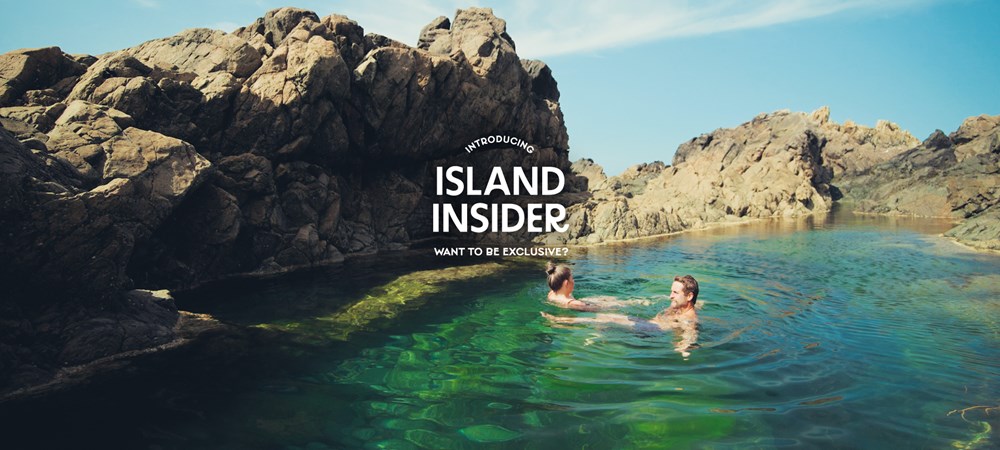The novel of the same name was originally written by Mary Ann Shaffer and Annie Barrows, and was inspired by the former’s trip to Guernsey in 1980.
Similar to Juliet, Shaffer visited Guernsey on a whim and was completely enchanted by the island. Making a lifelong impression, Shaffer became fascinated by Guernsey and its history and, like Juliet, became determined to tell the island’s incredible story.
Did the Germans really occupy Guernsey?
Much of the film is based on true events and facts surrounding what happened to Guernsey during WWII. Guernsey, alongside the other Channel Islands, was the only British territory that the Germans invaded and occupied during the war.
When the Third Reich gained control of nearby France, it seemed inevitable that the Germans would soon arrive in Guernsey. Evacuation of the island began on the 19th June, with the front page of the Guernsey Press telling parents to prepare their children to evacuate the very next morning.
As in the film, many families were separated during the war, sending their children off to safety in England. However, many islanders did follow their children and also managed to evacuate by boat before the Germans arrived.
By the time the Germans landed in Guernsey, almost half of the island’s population had already fled to mainland Britain.
The true facts and events of the occupation
The Germans attacked St. Peter Port on the 28th June 1940. As referred to in the film, tomato trucks were mistaken for military vehicles in a bombing raid that tragically killed 33 civilians.
There was in fact no British military presence on the island whatsoever when the Germans attacked. Despite reluctance from Prime Minister Winston Churchill, the British government had already decided that the Channel Islands served no strategic importance to Britain and would therefore not be defended.
Once the Germans realised that the island was undefended they arrived with no further force, and Guernsey offered its surrender on June 30th. What followed was an uncomfortable co-habitation of frightened islanders with their new German overseers.
The States of Guernsey handed overall control to the German authorities, while the day-to-day running of the island became the responsibility of a Controlling Committee, required to enforce new German directive.
Life in Guernsey changed significantly during the Occupation. The island was immediately shifted to Central European time, and a curfew was imposed. Islanders were cut off from any information and communication with the mainland. All radios on the island were confiscated, meaning that people had very little knowledge of the welfare of their families or how the war was progressing.
As the war continued, German soldiers set about making Guernsey one of the most fortified places on the planet. This involved equipment, materials and manpower being shipped from Europe to the island.
Thousands of foreign prisoners and other labourers were brought to the island to complete the construction of hundreds of concrete bunkers, gun emplacements and tunnels that can still be found today. Many of these prisoners were effectively treated like slaves, housed in inhumane encampments and deprived of food and rest.
Food was a huge problem throughout the occupation as the island was eventually cut off completely from any mainland supplies. There was precious little to feed the local residents, German soldiers and European labourers alike. As a result, the day-to-day lives of islanders revolved around queuing for the restricted food supplies. The potato peel pie is actually a true occupation recipe, which made the most of the limited ingredients available!
By winter of 1944, Guernsey was on starvation rations with both locals and soldiers at risk. The arrival of the Swedish ship SS Vega, chartered by the International Red Cross to bring in food and supplies, saved many people from death.
Shortly after, on May 9th 1945, the war came to its close and the island was officially liberated.
Are the locations in the film based on real places?
Similarly, many locations in the film are based on real places on the Island. The Crown Hotel is based on the Ship & Crown, a long-standing public house overlooking the St Peter Port seafront. What is now a popular and iconic pub was actually the harbour office for the German authorities during the occupation.
Are the characters real?
While the characters in The Guernsey Literary and Potato Peel Pie Society are fictional, some probably took inspiration from real people in the Channel Islands.
Guernsey had a thriving agricultural industry before the war, and the island was particularly renowned for the export of tomatoes. Though nobody named Dawsey Adams is recorded to have lived on the island, many farmers just like him stayed in Guernsey during the Occupation to protect their homes and land.
Elizabeth’s character in particular seems to draw inspiration from a true story. Marie Ozanne was a Guernsey woman who bravely stood up to the occupying forces during the Occupation. She defied their banning of the Salvation Army, of which she was a member, and also protested against their treatment of slave labourers. Like Elizabeth, Marie was imprisoned and sadly died in 1943. She is commemorated with a blue plaque memorial on the wall of her former home.
Two Islander's bravely risked their lives by hiding livestock from the increasingly hungry German soldiers: Miriam Milbourne saved a rare breed of Golden Guernsey goats whilst Violet Carey - perhaps the inspiration for Dawsey - kept a pig hidden away!
What about Guernsey in the present day?
Although a fictional story, The Guernsey Literary and Potato Peel Pie Society sheds light on the very real events in Guernsey during WWII.
Today you can visit Guernsey and take The Guernsey Literary and Potato Peel Pie Society Tour to find out more about the genuine locations and events that inspired the film.
There are also plenty of historical landmarks for anyone interested in that period of the island’s history, including the German Occupation Museum, the Military Underground Hospital and the Naval Signals HQ.



